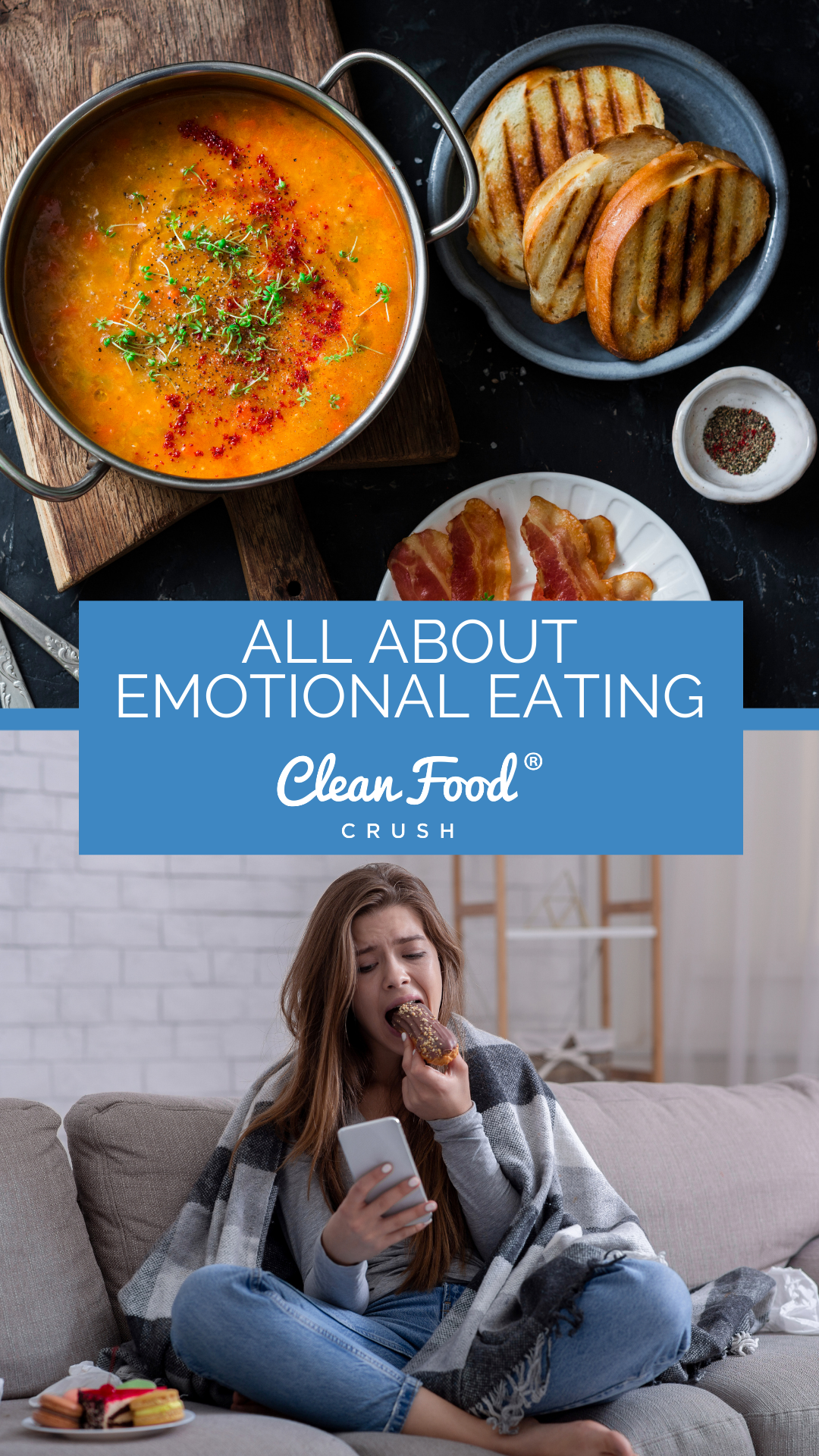

All About Emotional Eating
No matter who you are, we can bet that you’ve experienced a form of emotional eating. Whether this looks like overindulging on chocolate after receiving some bad news, or mindlessly munching late at night while trying to relax after a long day, emotional eating affects all of us from time to time.
If you’re someone who is trying to manage your weight or another aspect of your health, frequently engaging in emotional eating can get in the way of achieving or maintaining your goals. But how do you recognize it, and what can you do about it?
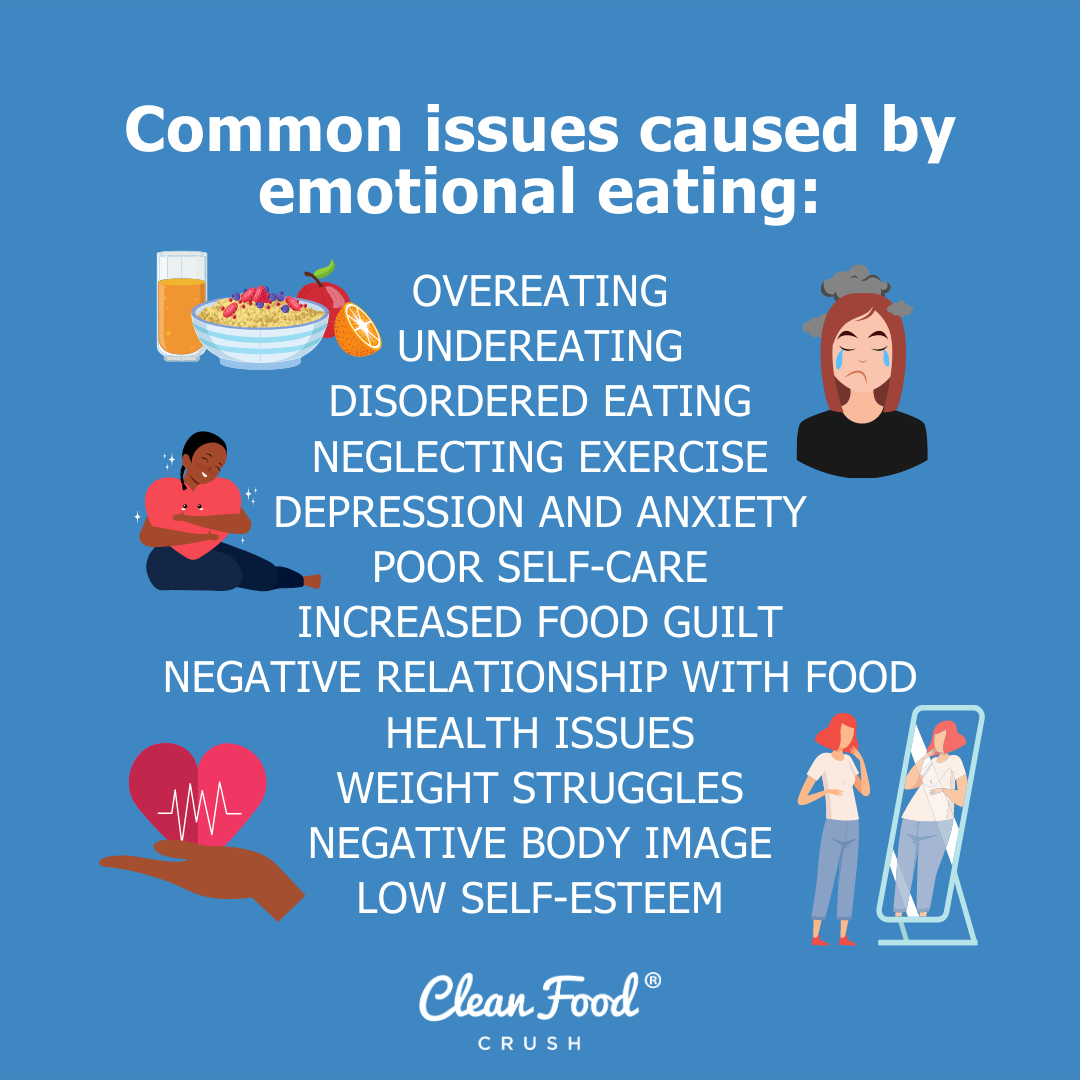
What Exactly is Emotional Eating and How Can it Harm You?
Emotional eating involves eating outside of the context of hunger for the purpose of soothing and coping with your emotions. We all turn to food for comfort or pleasure from time to time, and we do this both consciously and unconsciously. Since food is one of life’s greatest pleasures, it makes sense that it would be a common thing to turn to when dealing with our emotions. While people can choose to emotionally eat any type of food, it most often involves consuming larger than normal portion sizes of less healthy foods like ice cream or potato chips.

Not all Comfort Food is bad! Try Rachels Favorite Comforting Beef Stew and let it soothe you with its healthy goodness!
Most people associate emotional eating with only negative feelings like stress, boredom, or loneliness. However, it can also occur as a response to positive emotions like love and joy. Eating emotionally can occur when we are both happy or sad, anxious or calm, frustrated or at peace. While there is absolutely nothing wrong with enjoying food, emotional eating can become a problem if it becomes your primary source of pleasure and comfort. Most of us are faced with hundreds of emotions throughout our days, and if we don’t have healthy ways to deal with these ever-changing and sometimes difficult feelings, emotional eating can take over and quickly spiral out of control.
Some of the issues emotional eating can create include:
- Losing touch with your hunger and fullness cues, which can lead to both under and overeating
- Neglecting other important coping mechanisms, like exercise, spending time with loved ones, and talking through your feelings with people you trust
- Increased guilt associated with eating, which may lead to disordered eating habits and an overall negative relationship with food
- Health issues and/or weight struggles
- Negative body image
This Cauliflower “Mac & Cheese” is Epic Clean Eating Comfort Food!
How to Recognize Emotional Eating
Knowing what emotional eating is doesn’t always make it easy to identify in your own life, especially if emotional eating has become a normal occurrence. In order to recognize emotional eating when it is happening, it’s helpful to first understand the differences between physical and emotional hunger, since the two can be easily confused.
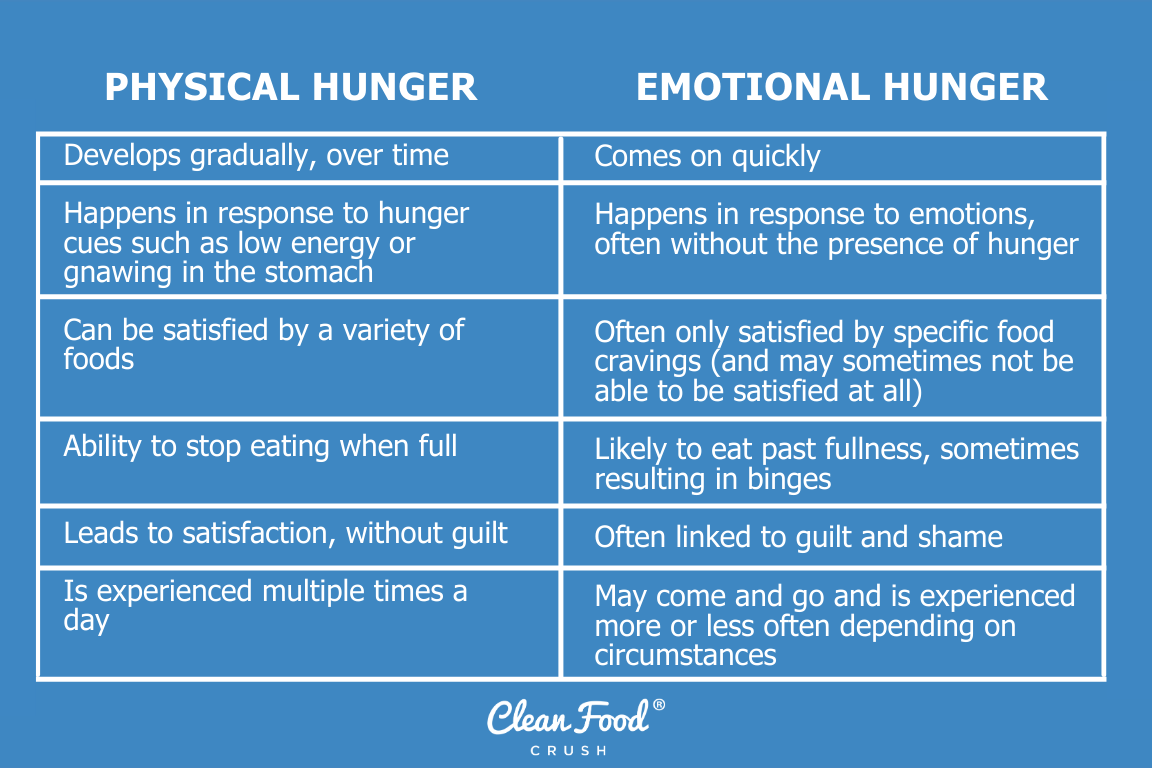
Here’s a breakdown of some of the differences:
Physical Hunger:
- Develops gradually, over time
- Happens in response to hunger cues such as low energy or gnawing in the stomach
- Can be satisfied by a variety of foods
- Ability to stop eating when full
- Leads to satisfaction, without guilt
- Is experienced multiple times a day

No need to deny your pizza cravings! This Cauliflower Steak Pizza is Low Carb Clean Eating Comfort you can feel GREAT about!
Emotional Hunger
- Comes on quickly
- Happens in response to emotions, often without the presence of hunger
- Often only satisfied by specific food cravings (and may sometimes not be able to be satisfied at all)
- Likely to eat past fullness, sometimes resulting in binges
- Often linked to guilt and shame
- May come and go and is experienced more or less often depending on circumstances
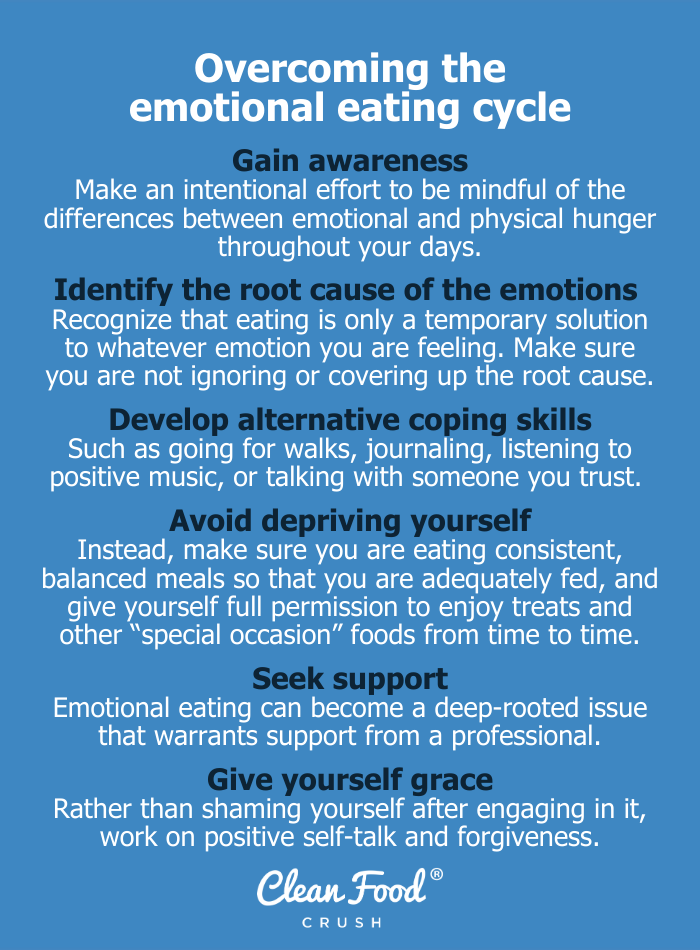
Tips for Overcoming the Emotional Eating Cycle:
If you find yourself frequently turning to food to cope with your emotions, try some of these tips:
- Gain awareness. Make an intentional effort to be mindful of the differences between emotional and physical hunger throughout your days. More awareness means a greater ability to work through it.
- Identify and deal with the root cause of your emotions. Recognize that eating is only a temporary solution to whatever emotion you are feeling. Make sure you are not ignoring or covering up the root cause. Take a moment to think about what triggered your emotion, and consider asking yourself questions like what are my needs during this time? What will help me work through and resolve this emotion in the long term?
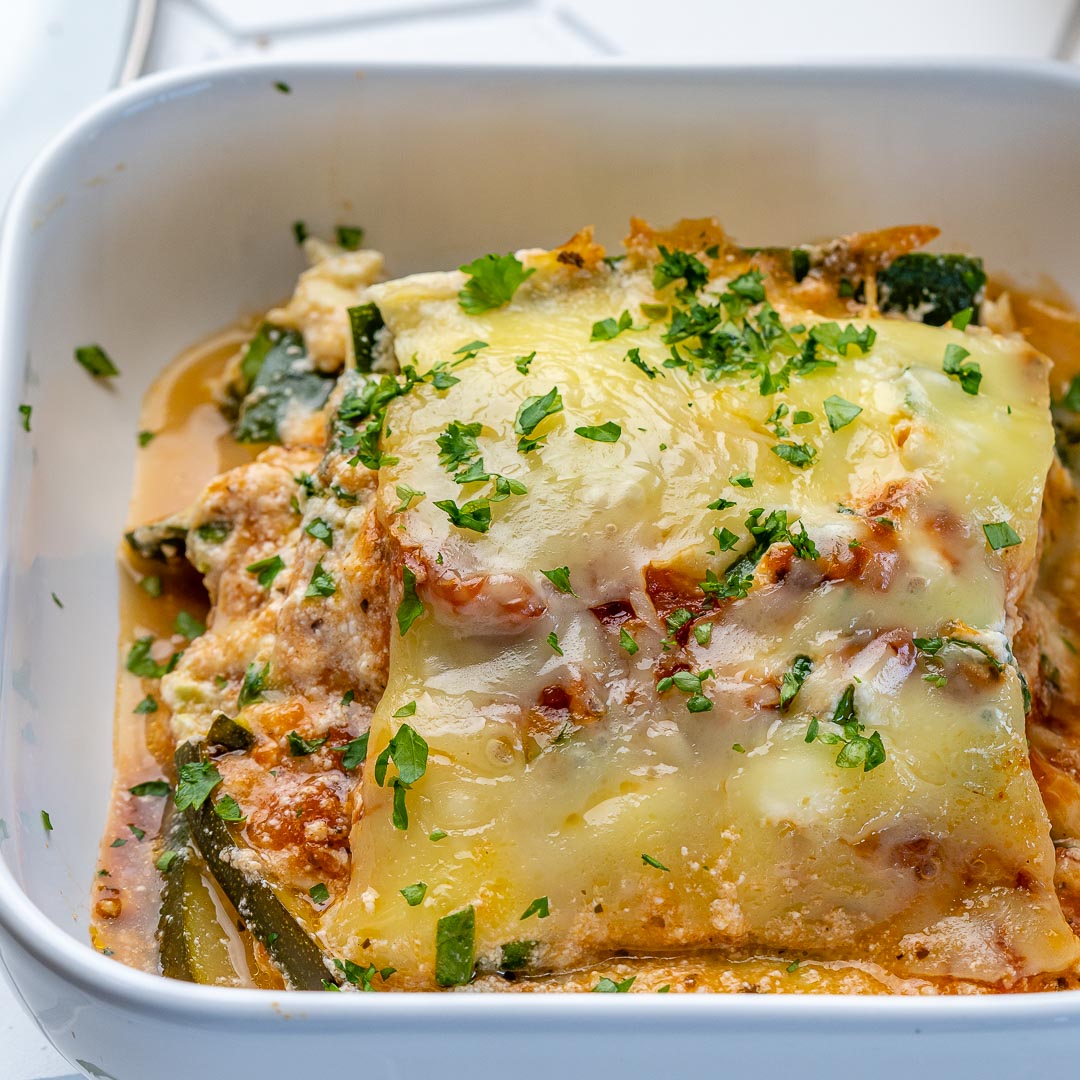
Just see if this Slow Cooker Zucchini Lasagna can’t lift your spirits AND your health! Comfort Food just got a makeover!
- Develop alternative coping skills. It can be easy to have your emotions become so tied to your eating habits that you automatically reach for a treat whenever you’re angry or stressed, often without really thinking about what you’re doing. With effort and persistence, though, this is a habit that can be broken. Work on creating other ways to deal with your emotions, such as going for a walk, journaling, listening to positive music, or talking with someone you trust. The more you engage in alternate behaviors, the more natural they will become.
- Don’t deprive yourself. Restricting and depriving yourself can increase the intensity of food cravings and trigger a strong desire to binge or overeat. Skipping meals and feeling deprived also make responding to emotions even more difficult. Instead, make sure you are eating consistent, balanced meals so that you are adequately fed, and give yourself full permission to enjoy treats and other “special occasion” foods from time to time.

You won’t feel deprived with this Creamy Green Chili Loaded Chicken Bake! Mmmm mmmm mmmmmmmmmmmm!
- Seek support. Emotional eating can become a deep-rooted issue that warrants support from a professional. Asking for and accepting help is a sign of strength, not weakness. If you find you are repeatedly unable to work through the emotions that may be causing the eating episodes on your own, consider seeking professional help from a therapist or registered dietitian nutrition who is trained in intuitive eating (which you can read more about in this post). These professionals can help you identify habits and behaviors about yourself that you may not realize on your own, and can serve as accountability while offering tips for coping with your emotions in a positive way that is personalized to you.
- Give yourself grace. Emotional eating is inevitable for most of us, and this is okay. Rather than shaming yourself after engaging in it, work on positive self-talk and forgiveness. Remember that just because it happened one day doesn’t mean it is going to happen again and again. Focus on learning from the experience and use it as an opportunity to plan for the future.
One of the most common success stories of our Clean Eating Challenge members is that they overcome emotional eating through the amazing support they find in their Challenge groups as well as so many delicious recipes that are both comforting AND healing. If going it alone hasn’t worked out for you, consider the CFC 30 Day Clean Eating Challenge. Every single one of us has been there. We’d love for you to join us!
These Butternut Squash Burrito Bowls bring the party to your table AND your tummy! PLUS it’s loaded with vitamins and energy!
In Summary
Emotional eating is a normal experience that nearly everyone engages in at various times throughout their lives. While it is not always a negative thing, it can easily become out of control and lead to both mental and physical health struggles.
By first recognizing what emotional eating is and when it may be happening to you, you can take the steps outlined in this post to help prevent it from becoming an issue in your life. This will take time and a lot of dedication, but the reward will be worth it. Remember to be kind and gentle with yourself every step of the way, and do not hesitate to reach out to us or another trusted source for support as needed.



















